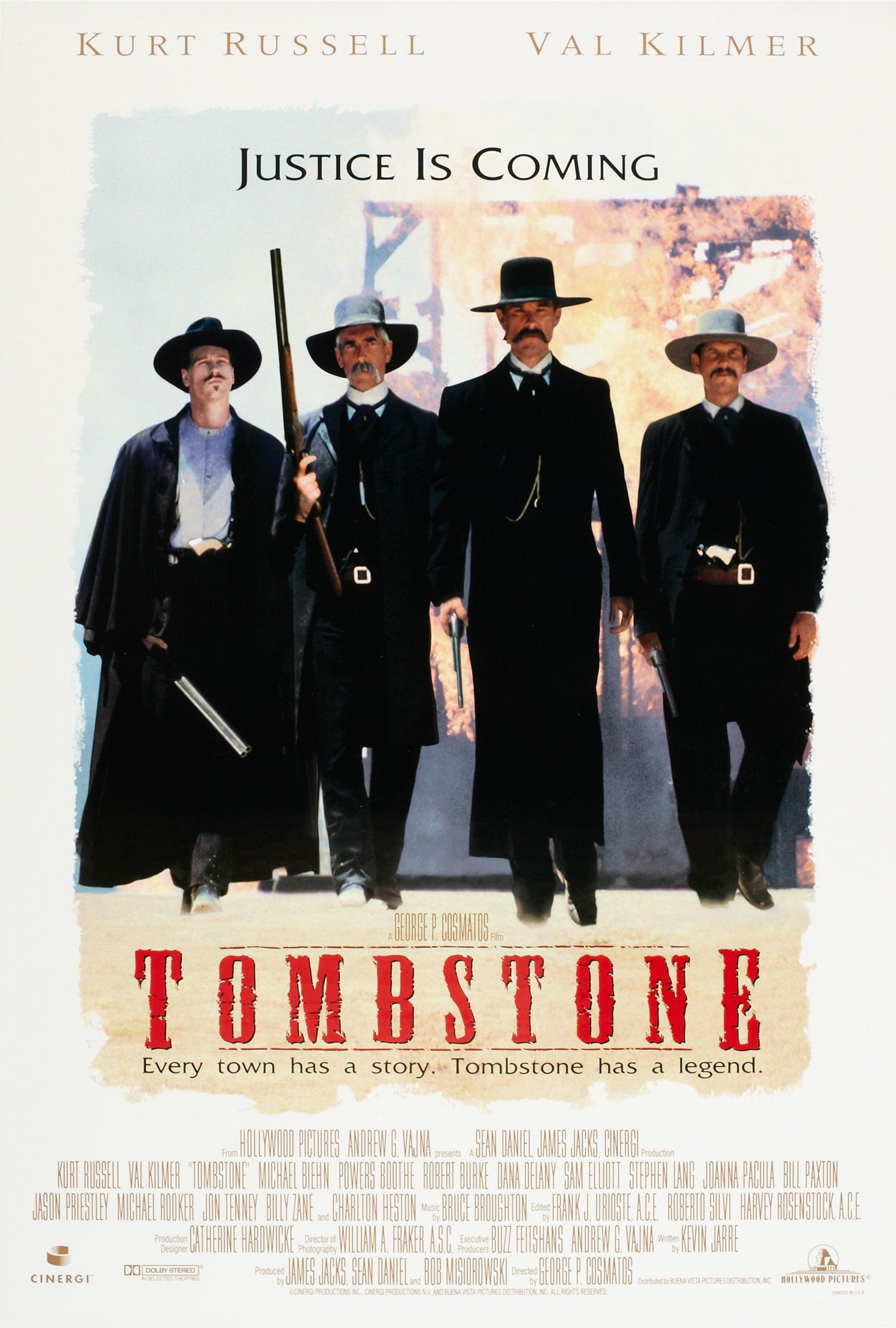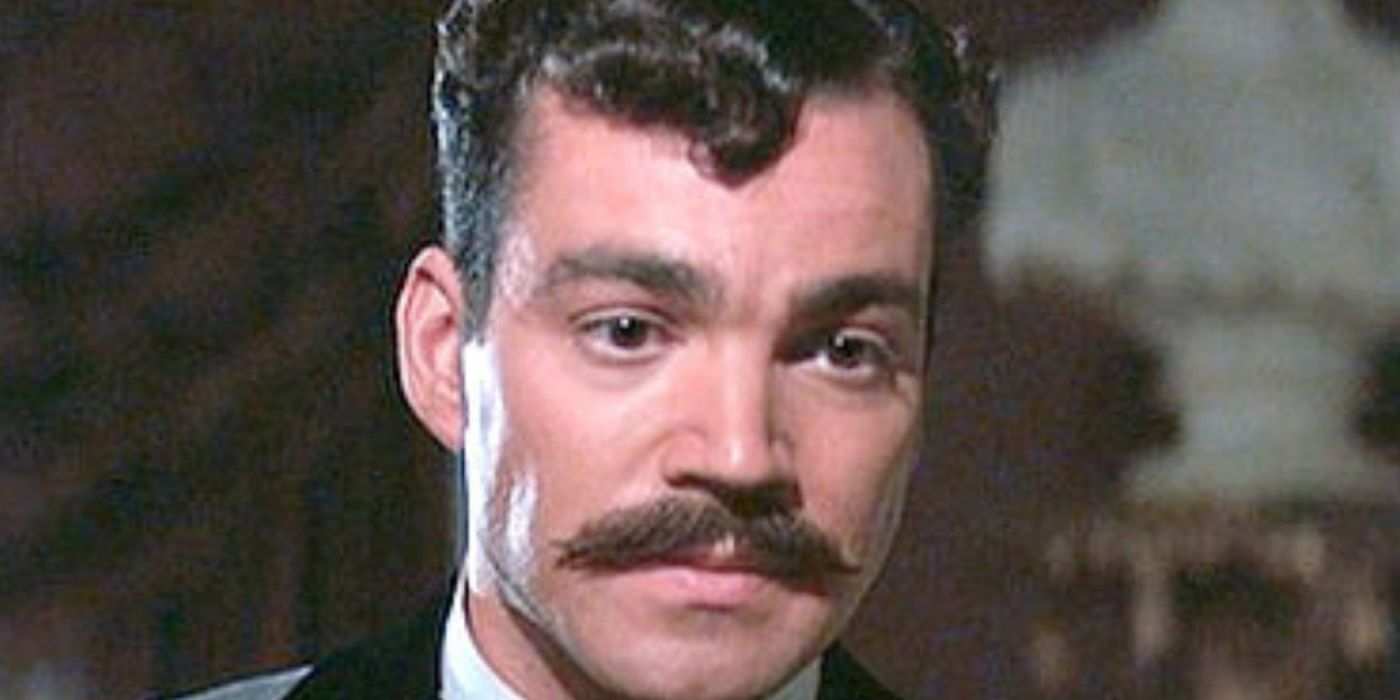
The Genius of Kurt Russell and Val Kilmer’s Tombstone Mustaches
Since its release in 1993, Kurt Russell’s <em>Tombstone</em> has solidified its status as a legendary Western, marking a significant moment in the genre’s history following its purported decline. While it achieved financial success, it did not quite enter the top 10 box office hits of that year. Critically, it garnered appreciation, albeit not universal acclaim at the time. This riveting portrayal of pivotal events in Wyatt Earp’s life cleverly aligns itself with the most celebrated examples of Western cinema, captivating audiences and critics alike.
Over the past 30 years, the recognition of Tombstone‘s exceptional cast has seen substantial growth. Standout performances by Kurt Russell as Wyatt Earp, Val Kilmer in his iconic role as Doc Holliday, and Michael Biehn as Johnny Ringo have drawn attention, alongside numerous early portrayals by actors destined for greater fame. As noted by Roger Ebert, the performances of Russell and Kilmer became so impactful that they created a lasting association with Tombstone, influencing perceptions of their future work. This enduring legacy cannot be overstated, highlighting the film’s significant impact on the careers of its stars.
To understand the lasting importance of Tombstone, particularly in light of some rather critical contemporary reviews, such as the one from Ebert’s colleague Gene Siskel, it’s essential to consider the nuances beyond the surface details. While the standout performances deserve attention, it is often the smaller, seemingly trivial elements that contribute to the film’s legacy. A peculiar focal point lies in the mustaches of the cast, revealing a deeper truth about Tombstone‘s cultural endurance over the past three decades; intriguingly, one of those mustaches was not even authentic.
The Surprising Story Behind the One Fake Mustache in Tombstone
Why the Cast of Tombstone’s Commitment to Authentic Mustaches Matters
One of the most frequently shared nuggets of trivia about Tombstone is the delightful tidbit that only one member of the cast donned a fake mustache. At first glance, this might come off as a trivial detail, but for enthusiasts of facial hair, it becomes an intriguing point of discussion. Given the impressive quality of mustaches showcased throughout the film, it is indeed remarkable that the majority were authentic.
To clarify, the leading actors—including Kurt Russell, Michael Biehn, and Val Kilmer—all sported genuine mustaches, while Sheriff Johnny Behan, portrayed by Jon Tenney, was required to wear a fake one. This was due to Tenney’s previous role in another film that mandated a clean-shaven look, leaving him unable to grow a mustache in time for filming. As co-star Biehn recounted during a 2010 interview with MovieWeb:
“There was one guy, Jon Tenney. He didn’t get to grow his own mustache because he had a job right before that,”
However, the significance of the mustaches extends beyond mere aesthetics. The decision for the cast to grow their own mustaches is emblematic of the film’s overarching commitment to authenticity and attention to detail, which serves as a testament to Tombstone‘s production quality and its cultural impact.
How Kurt Russell’s Mustache in Tombstone Illuminates the Film’s Excellence
The Importance of Small Details in Filmmaking
Even today, Tombstone resonates with audiences, largely due to its remarkable world-building, which is rooted in the meticulous attention to detail exemplified by the cast’s commitment to authentic mustaches. This dedication is particularly impressive, considering the tumultuous production history, which almost resulted in the departure of one of the film’s most talented actors. Michael Biehn, who had a close relationship with original director Kevin Jarre, was reportedly dissatisfied with the new direction under the replacement director, which almost led him to quit.
Biehn confirmed that the insistence on real mustaches came from Jarre himself. Although Jarre was ultimately replaced by George P. Cosmatos, the mandate for mustaches remained intact:
“He was very specific about how he wanted the mustaches. He wanted them to curl up on the end. Which means, if you grow a mustache, and it grows long enough, you have to use wax on the end of it. Everyone was pretty proud that they grew their own mustache.”
Interestingly, Kurt Russell later disclosed that he took on an influential role in guiding the direction of Tombstone after Jarre’s departure, while Cosmatos functioned more as a figurehead. Despite this, Cosmatos was recognized for his commitment to historical accuracy, a vision he evidently shared with Jarre, which contributed significantly to the film’s lasting relevance.
Another fascinating detail regarding the mustaches is that Tombstone‘s pursuit of authenticity forced Kurt Russell to modify his own mustache during filming. In an interview with Esquire, Russell recounted that he had initially intended to grow his mustache longer, inspired by photographs of the real-life Wyatt Earp. However, Cosmatos intervened, pointing out that Russell’s reference photo was from an earlier stage in Earp’s life and insisted on a more accurate representation:
“It’s funny, I let my mustache grow to try to find what I wanted to do with Wyatt Earp. There was a picture that I had of him where I had the exact same mustache, but [Cosmatos] was being incredibly accurate to certain things. He said, ‘Well, that’s not the way he wore his mustache at that time.’ And I’m actually glad that I went with the mustache that he wanted me to go with, but the other mustache … God, I looked just like him. I don’t know whether it was the right or wrong thing to do in that regard.”
While the film’s characters and performances have undoubtedly solidified Tombstone as one of the most beloved Westerns in cinema history, it is the unwavering dedication to detail that truly sets the film apart. With a substantial budget of $25 million—considering that 1993’s highest-grossing film, Jurassic Park, was produced for $63 million—Tombstone maximized its resources effectively. This is evident in the painstakingly authentic recreation of the historic 1881 Gunfight at the OK Corral.
Despite facing criticism for sensationalizing history, Tombstone has received accolades for its historical fidelity. It is noteworthy that when popular memory revisits the OK Corral—a relatively minor event in actual history, as per historical experts—this film’s depiction is often the one most vividly recalled. The meticulous accuracy concerning costumes, character appearances, dialogue, and weaponry, combined with the commitment to filming on location in Tombstone, creates a powerful resonance that elevates the narrative beyond typical Hollywood embellishments. Ultimately, it is these subtle details, like Russell’s dedication to his character’s mustache, that profoundly enrich the film’s storytelling.

Tombstone is a gripping Western film inspired by true events. It follows a group of outlaws known as the Cowboys, who unleash chaos in a town after murdering several lawmen in retaliation for the deaths of their gang members. This violent wave prompts a retired lawman to gather a group of vigilantes to restore order and confront the Cowboys, culminating in a dramatic showdown.
- Release Date
-
December 25, 1993
- Runtime
-
130 minutes
- Cast
-
Bill Paxton, Charlton Heston, Sam Elliott, Powers Boothe, Val Kilmer, Kurt Russell, Michael Biehn, Jason Priestley
- Director
-
George P. Cosmatos, Kevin Jarre




